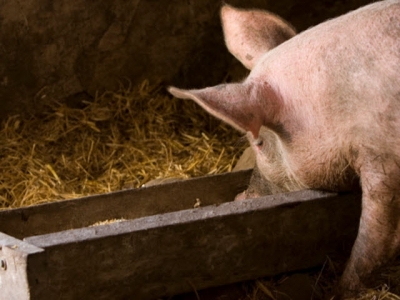Three ways to implement piglet creep feeding

Creep feeding is a well-known practice, but it is not always successful. Here’s how to make it work at your pig farm.
The influence of piglet creep feeding often is overlooked, perhaps because of the small amount eaten during pre-weaning, which is typically around 200 g/pig (for four-week-old weaned pigs).
However, creep feeding not only improves weaning weights, but it also improves post-weaning feed intake and piglet performance as shown in Table 1. The improved feed conversion ratio (lower cost/kg gain) is explained by the improvement in gut structure and microflora brought about by creep feeding piglets.
How to improve creep intake
There are a number of nutritional and management factors that can improve creep feed intake. This article focuses on three key ways to improve the creep intake of piglets on your farm.
1. Offer creep feed to piglets early
Studies have shown, that the earlier creep feed is offered the greater proportion of piglets will be eating by weaning. When creep is offered from seven days of age, around 10 percent more of the litter will be eating by weaning, compared to when creep is offered from day 14 or 18, as shown in Figure 1. It is highly recommended to offer a high-quality creep feed from around four to seven days of age for best results.
Even when creep feed is offered early, there still is likely to be around 20-30 percent of piglets in the litter that do not eat any creep feed (usually the biggest, more dominant pigs). Often the smallest pigs benefit the most from creep feeding, as these are usually the ones suckling from the least productive back teats on the sow. Because of this, it is often reported that creep feeding reduces wean weight variation.
2. Provide creep feed in small amounts and often
Creep feeding tends to work best when it is offered in small amounts and often. Start with very small amounts from around four days of age, and replace this at least twice a day. This ensures the creep feed remains fresh and palatable to the piglets.
In addition, this process encourages piglets with their inquisitive nature to investigate what you are doing each time you add new creep feed. What also often works well is to offer creep feed when the sow is up and feeding as the piglets cannot suckle at this time and are more likely to eat.
Another important point to remember is to provide clean drinking water at all times. If piglets are eating creep feed, they will need a steady supply of clean drinking water. Make sure there always is an adequate supply available in the farrowing pens.
It is beneficial to try to avoid an abrupt change of diet at weaning. This will contribute to the post-weaning growth check by introducing the first stage starter diet two to three days pre-weaning.
3. Offer highly palatable diets
Research shows that more complex diets improve creep feed intake, the number of pigs eating in the litter and pre-weaning growth. It also has been demonstrated that creep feed that contains high levels of milk products are more effective at improving pre- and post-weaning performance than a standard complex feed (15-20 percent lactose) as shown in Figure 2. This benefit continues throughout the piglet's lifetime making it highly cost effective.
Bottom line
Creep feeding works best when very small amounts of a high-quality diet are fed from the first week of life. In practical terms, if a litter of piglets eat 2.4 kg of a £1000 creep (200g/pig with 12 piglets) that comes to £2.40 per pig. If pigs exit the nursery around 1 kg heavier, this is at least a 6:1 payback without even considering any additional feed conversion ration improvements or lifetime benefits!

Creep feeding works best with the smallest piglets in the litter.

Creep feeding not only improves weaning weights, but it also improves post-weaning feed intake and piglet performance

When creep is offered from seven days of age, around 10 percent more of the litter will be eating by weaning, compared to when creep is offered from day 14 or 18.
Related news
 What does a coughing pig reveal?
What does a coughing pig reveal? Is precision livestock farming (PLF) still a utopian dream or does agribusiness see such tools as potentially transformative?
 Three ways piglet diets can benefit from wheat gluten
Three ways piglet diets can benefit from wheat gluten Wheat gluten is one of the most important proteins in wheat. Lately, it has been used in piglet diets with promising results.
 How to formulate energy-rich diets for growing piglets
How to formulate energy-rich diets for growing piglets Energy is the most expensive, critical and essential nutrient in any pig feed and a nutrient that is used to prorate all other nutrients